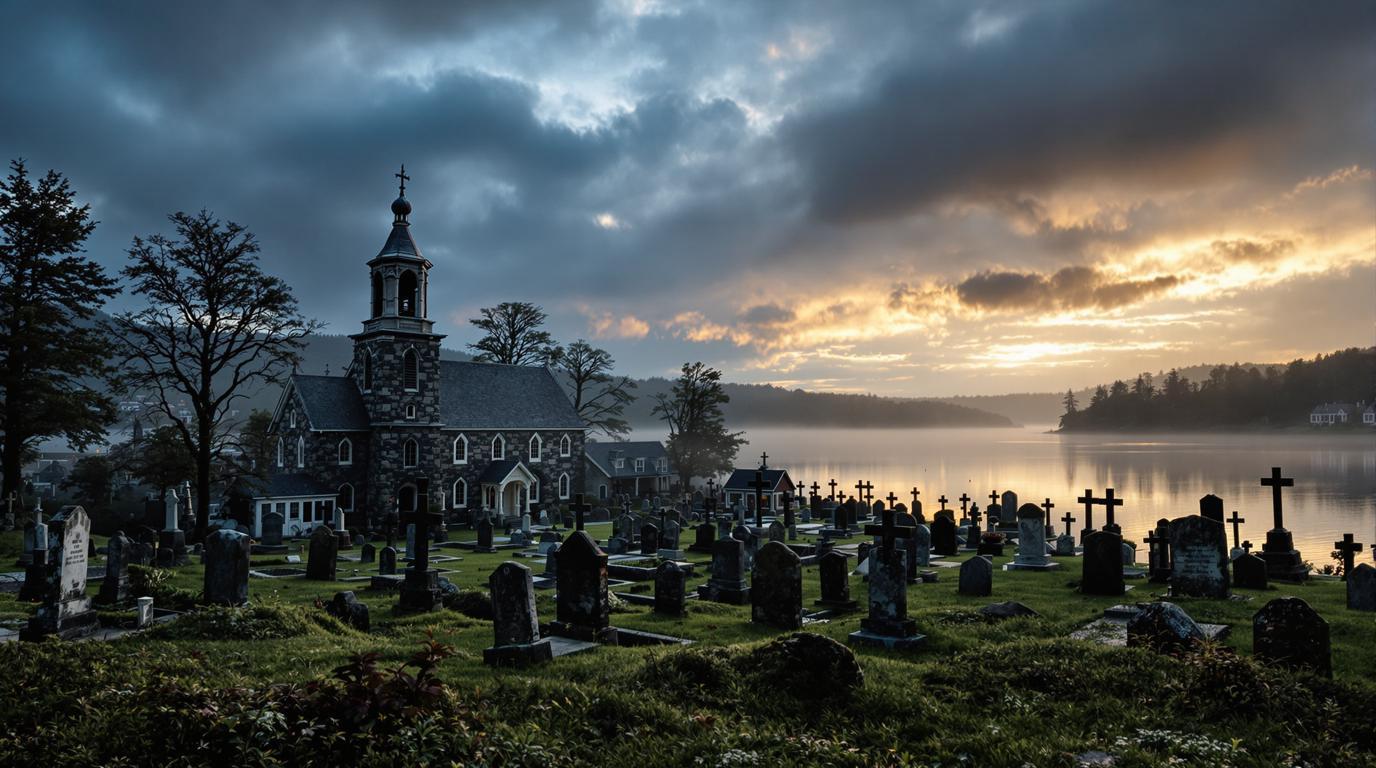The sun sets behind the Hudson River as I cross the modern bridge into Sleepy Hollow. My GPS indicates just 25 miles north of Manhattan, but I’ve entered a parallel dimension where literary legend bleeds into reality. The village spans only 5.1 square miles, yet an astonishing 55.58% is water – more aquatic than Venice. As twilight deepens, I notice something unexpected: Spanish conversations drifting from historic Dutch-style homes, the first hint that this legendary American ghost town has evolved into something far more fascinating.
A Living Museum Where American Legends Rest Beneath Ecuadorian Footsteps
Sleepy Hollow Cemetery sprawls across 85 acres of rolling hills, holding both America’s past and its multicultural present. The gravestones of Washington Irving, Andrew Carnegie, and William Rockefeller stand in silent contrast to a village where 47.8% of residents are Hispanic.
“I wasn’t prepared for how real it feels – not like a tourist trap, but like walking through a living story where the past and present have this strange conversation,” a visitor tells me while photographing the Old Dutch Church.
This 1697 stone church, among America’s oldest, stands exactly where Washington Irving placed it in his famous tale. Remarkably, 17.5% of Sleepy Hollow residents are Ecuadorian American – one of the highest concentrations in the United States.
The historic bridge from Irving’s tale has been replaced, but local historians showed me the original 18th-century stone footings visible beneath the water at low tide. Like finding the archaeological remains of a fairy tale.
Where Literary Legend Meets Hudson River Reality
Unlike other small American towns that host millions of visitors, Sleepy Hollow maintains its authentic character despite its fictional fame. The famous Headless Horseman statue stands at a village intersection that would be unremarkable in any other town.
While Sleepy Hollow’s cemetery holds famous Americans, other historic villages across the world hide similar treasures – but none combine American Gothic literature with such surprising diversity.
The Rockefeller State Park Preserve borders the village, offering 30 miles of trails through 750 acres of woodland. Here, the legendary “haunted woods” of Irving’s tale become a tangible summer escape.
Kykuit, the Rockefeller Estate, reveals another layer of American history with its art collections and gardens. The outdoor sculptures are best viewed in summer, without the fall crowds that descend for Halloween festivities.
Summer 2025: Experience the Legend Without Halloween Crowds
Summer offers the perfect window to experience Sleepy Hollow’s dual nature. The village stays 30°C cooler than Phoenix thanks to Hudson River microclimates, making it ideal for July exploration.
The Old Dutch Burying Ground – different from the main cemetery – contains graves dating to the 1600s and is notably less crowded before September’s Halloween rush.
Road-tripping through the eastern United States offers opportunities to visit other uniquely named American towns with similar tourism draws, but none match Sleepy Hollow’s literary pedigree.
For water lovers, Hudson River kayaking launches are available near Kingsland Point. The village’s high water percentage makes it a surprisingly excellent summer paddling destination, with routes past the Sleepy Hollow Lighthouse built in 1883.
What the Guidebooks Won’t Tell You
The preservation of Sleepy Hollow’s historic sites mirrors other global restoration successes, but with distinctly American characteristics. The cemetery offers self-guided tours daily, but the evening lantern tours run year-round, not just at Halloween.
Sleepy Hollow’s Dutch colonial architecture and European influences can be found in other American villages that evoke European destinations, creating a unique architectural heritage.
For the best photos, arrive at the Union Church of Pocantico Hills before noon to see sunlight through the stained glass windows – the last work by Henri Matisse and nine windows by Marc Chagall.
After three visits to Sleepy Hollow, I’m convinced its soul lies in this remarkable contradiction: a place famous for its past that’s secretly pioneering America’s multicultural future. Like a character from Irving’s tale watching history unfold, this village holds its mysteries close – some supernatural, others surprisingly human. But unlike poor Ichabod Crane, you’ll definitely make it across that bridge with stories to tell.
